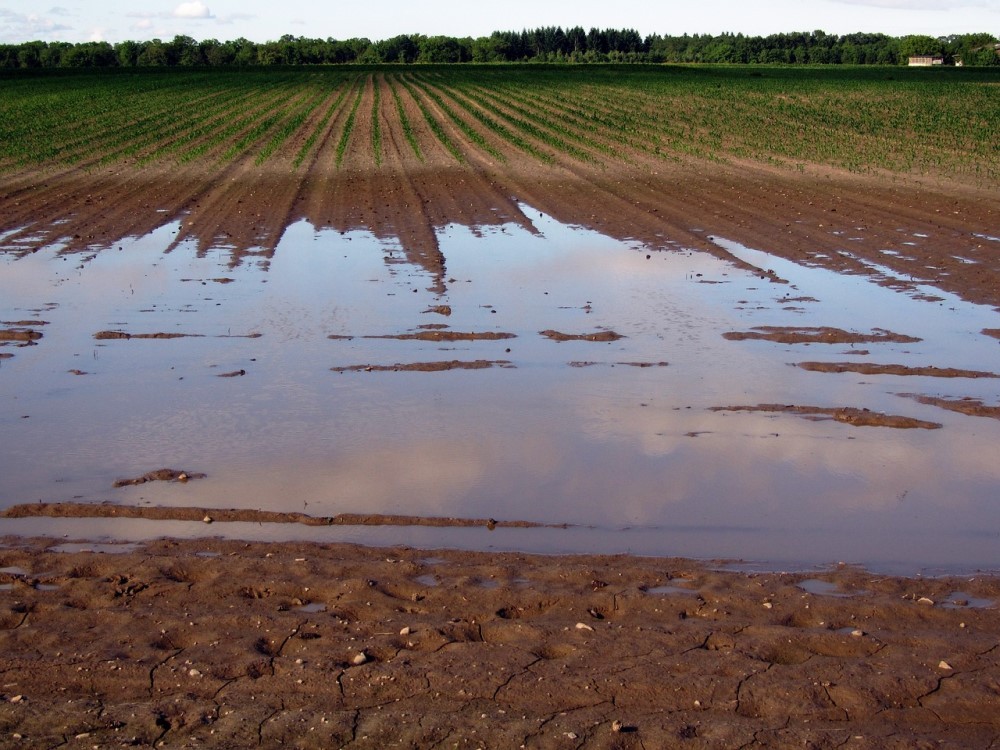After the flood that hit Romagna in May 2023, an innovative project aims to restore soil fertility. Thanks to the collaboration between Timac Agro Italia and the University of California UC Davis, scientific research and high technology come together for a sustainable agricultural rebirth
Romagna’s challenge after the flood
May 2023 represented a moment of profound crisis for Romagna agriculture. A flood of exceptional proportions has overwhelmed the province of Ravenna, summarizing entire expanses cultivated and irreversible in an irreversible way the balance of the soil.
Once fertile fields have turned into a mud expanses, while the crops were destroyed due to the excess of water. Agricultural infrastructures also reported large damage. Numerous rural roads have become impractical, while irrigation systems and drainage systems have stopped working.
In addition to the immediate impact, the catastrophe left deep consequences. The soil structure has lost stability, reducing its ability to drain water and absorb essential nutrients for plants growth. The abundant rainfall have delated vast quantities of minerals and nutrients, further imposing land and threatening agricultural productivity in the following months. In addition, stagnant water favored the proliferation of pathogenic microorganisms. Which has increased the risk of diseases for plants.
The farmers found themselves in front of an unprecedented challenge. The companies, already tried by the increase in production costs and climatic irregularities, have undergone huge losses, with heavy economic repercussions.
Faced with this emergency, the scientific community and the realities of the agri -food sector have launched recovery initiatives to return the conditions necessary for the resumption of agricultural activity to the land. Among these, the project promoted by Timac Agro Italia It stands out for its innovative and multidisciplinary approach.
The intervention of Timac Agro and the collaboration with the University of California UC Davis
Timac Agro Italia, a leading company in plant nutrition, has started an in -depth study path to understand the effects offlood on soil and underground water resources. The project saw the involvement of the Agricultural Consortium of Ravenna and of thePi (Provincial Association of mechanical-agricultural-industrial companies) of Romagna and part of the Bolognese.
In its initial phase, the initiative has placed solid scientific bases for the development of adaptation and mitigation strategies. Thanks to the support of the GROUPE ROULLIER World Centro of Innovation In Saint-Malo (north-west of France), scholars analyzed the characteristics of the affected land, evaluating key parameters such as the accumulation of gas, the reduction of nutrients, the absorbed sun radiation and the porosity of the soil. Particular attention has also been paid to the quality of the aquifers, to understand the impact of the laying of sea level on water resources.
To mark a decisive turning point was the entry into the field of researchers from the Department of Bioengineering and Agriculture of the Californian University UC Davisone of the most advanced academic centers in the agriculture and sustainability sector. Thanks to this transoceanic collaboration, it was possible to integrate advanced investigation methodologies and the latest generation technological tools.
Drones and satellites for advanced mapping
One of the most innovative aspects of the project is the use of satellite technologies for the mapping of the flooded areas. Through the data collected by the satellites Sentinel-2scientists have developed detailed maps of the affected areas, classifying them based on the intensity of the event.
The analysis made it possible to compare the indices detected before and after the flood, providing relevant information to define the sampling methodology and the most appropriate interventions. These data represent a fundamental scientific basis to guide the agricultural recovery, allowing targeted interventions for the restoration of soil fertility.
The value of scientific research and international cooperation
The CEO of Timac Agro Italia, Pierluigi Sassi, underlines the importance of this synergy between the academic world and the private sector:
«We believe a lot in the collaboration with prominent partners of the scientific community and the project shared with l’Californian UC University Davis honors us, because it allows you to put in common authoritative academic skills with the’Long course experience of the Roulier World Centro of Group, which includes our company, the largest European research center for plant nutrition».
Sassi also highlights the positive impact of the initiative in the area: “A partnership that is placed l’The aim of restoring the productivity of an important agricultural area of our country, not only for the value expressed by its socio -economic fabric, but also for the ability of resilience it has shown. A goal that we intend to pursue with the’Active listening to the real needs of farmers, always at the center of all our growth and development strategies».
The third phase: towards the recovery of fertility
After the land analysis and satellite mapping, the project has now entered its third phase. The focus moves to the correlation between the collected data and the concrete agronomic interventions. The goal is to provide farmers with practical tools to restore soil fertility, improve the chemical characteristics of the soil and oxygenation.
Thanks to the results obtained, it will be possible to adopt more efficient and sustainable management practices, so as to guarantee not only production recovery, but also a greater resilience of the territory in the face of future extreme climatic events.
A model for agriculture of the future
The project started in Romagna is not only a post-high recovery plan, but could represent a replicable model to face the challenges imposed by climate change. The integration between scientific research, advanced technology and collaboration between public and private bodies is configured as a winning strategy to guarantee the sustainability of the agricultural sector in the long run.
If the 2023 flood has marked a deep wound in the Romagna territory, this initiative shows how the opportunity of a renewal can arise from the crisis. Thanks to an approach based on innovation and knowledge, Romagna can not only revive, but become a virtuous example of resilient and technologically advanced agriculture.

